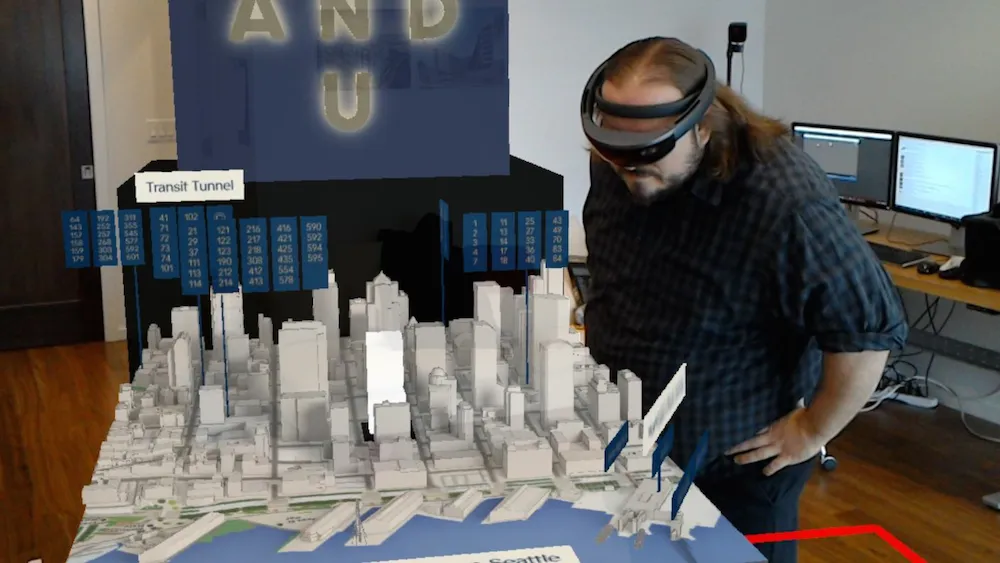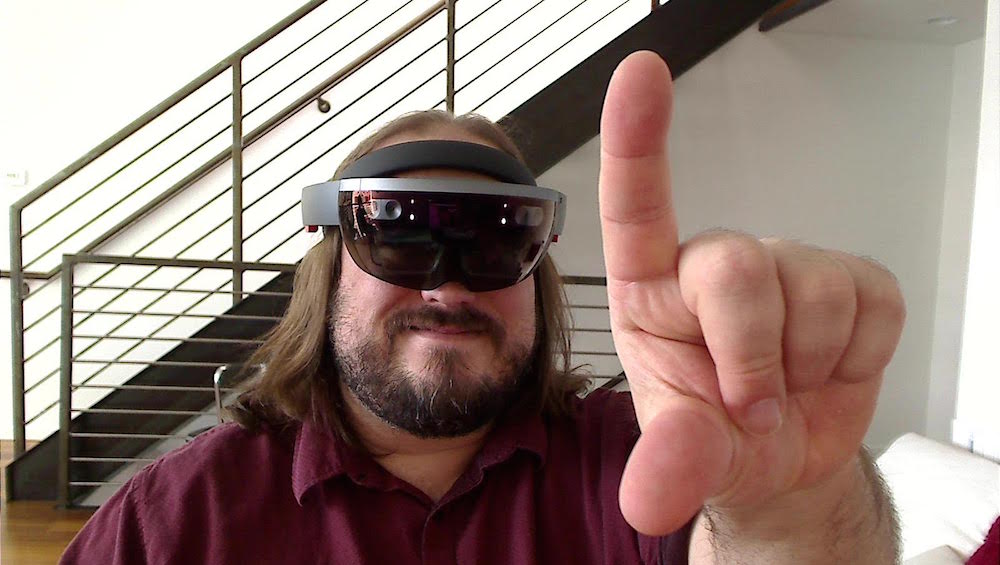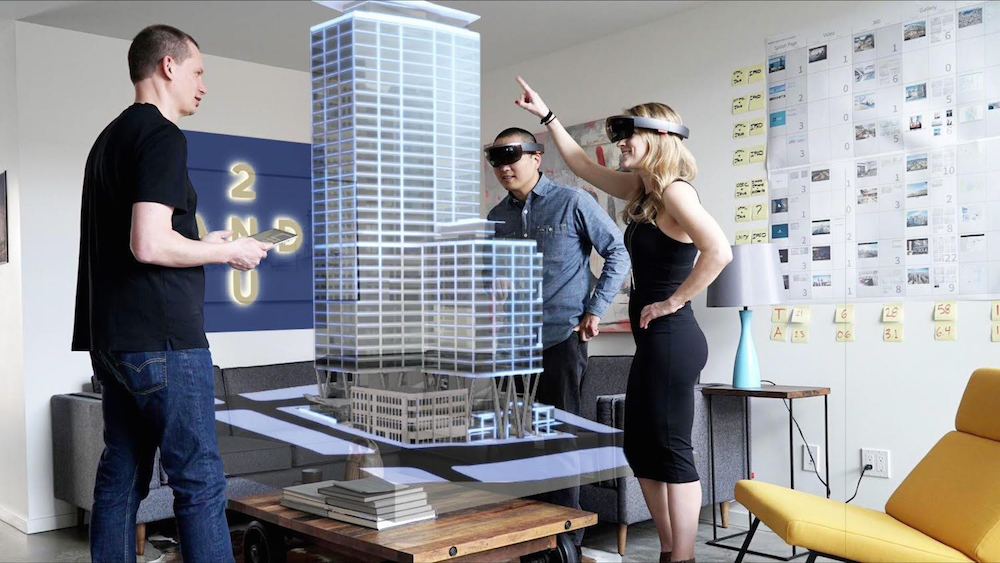Kyle Riesenbeck has an alter ego.
By day he works in tech, but at night he takes off his glasses…and then puts them right back on to become “Reverend Kyle” – one of the Internet’s most active VR personalities.
As Rev. Kyle,Riesenbeck hosts a popular VR podcast, creates Vlogs, tweets and generally does anything he can to stir the pot for this emerging industry’s fanbase. The good reverend’s affable demeanor and insider expertise has helped him to carve out his own unique niche amongst VR’s familiar faces. However, what those fans may not know is that Riesenbeck’s day job is just as VR focused as his extracurricular activities.
Studio216 is not your average design company.
This firm is dedicated to bringing the power of virtual and augmented reality to bear in its day to day operations. This ambition led the company to announce this week that it has created the world’s first holographic real estate office to help drive sales for a property in Seattle called 2+U. The office is being created in partnership with Mircorsoft and Skansa USA and it will utilize the former’s HoloLens augmented reality headset.
According to the studio:
Riesenbeck is serving as technical lead for Studio216. UploadVR had the chance to talk with him one on one about this upcoming virtual endeavor and the somewhat controversial nature of the headset that will be powering it.
UploadVR: How do you see AR impacting the worlds of architecture, design, sales, and marketing for real estate and beyond?
Riesenbeck: In our field, being able to see something before it has been built, visualizing the unbuilt environment, is critical. Typically, we would use renders, animations, and dollhouse models to fulfill our clients needs. Now, with new technologies such as VR and AR, we can give our client the ability to step inside their projects, years before they will be built, and this just blows people’s minds. Especially with HoloLens, where we can have multiple people viewing a hologram of their building together, collaborating on changes, and traveling through a shared experience. It’s game changing for us.
UploadVR: What has the response been for this design firm? Does using AR help sell or pitch more real estate projects?
Riesenbeck: I spend a lot of time demoing our hardware and software to potential clients. Most of them see the obvious benefits right away. Others need a bit of convincing. It all depends on the level of innovation they are willing to accept. In the past few years, we’ve evolved from physical to digital, from sketchpads to iPads. This is the next step, and we are thrilled to be pushing bleeding edge ideas into a quickly expanding industry.
UploadVR: Is there a direct correlation between using VR/AR in architecture and a more successful business?
Riesenbeck: Any business that is willing to at least explore the options of adopting new technology will always have the upper hand. It’s the fear of change that leaves people in the back of the line, wondering what they need to do to catch up. At the same time, just saying, “Oh, we use VR and AR,” without having a clearly defined path is just as bad.
UploadVR: About HoloLens Does it actually work? I know thats a somewhat juvenile question but people seem very upset by the disparity between the device’s actual capabilities and its stated capabilities. Can this headset do even a fraction of what the marketing materials suggest?
Riesenbeck: Ha ha ha, yes… It does actually work! I think that most of the claims are true. The HoloLens is actually a beefy device, considering it isn’t wired to anything. I don’t think there is really the right software out there yet for this to be a daily driver for anyone yet, but business applications are making it a valuable tool very quickly.
UploadVR: How limiting is the FOV? How clear is the resolution? How Tight are the interactions?
Riesenbeck: The stigma around Hololens is that the FOV is just too small to provide any value, but that’s a very narrow way of looking at it (get it?). With VR, you have to create the content AND the environment, but with AR, you aren’t creating the environment, you are just filling your existing space with holographic stuff. As long as that stuff isn’t bigger than the FOV, you barely notice it. Plus, the longer you use the device, the less you notice the FOV at all. As far as interactions go, it is quick to respond, with no visible lag.
UploadVR: How would you compare the HoloLens to other AR headsets like the Meta 2?
Riesenbeck: I tried the original Meta, and I have seen the Meta 2 in action on video. I would say that the the HoloLens has a smaller FOV, but it destroys the Meta 2 in terms of tracking, input, and performance. I’m not sure if that is a worthwhile trade-off. Plus, tethered AR seems like a step in the wrong direction. Then again, both AR headsets have room for growth and more iterations might have them meet in the middle somewhere.
UploadVR: Do you see Microsoft dramatically improving any of the HoloLens’ weak areas before commercial launch?
Riesenbeck: No idea. All I can say is that if you look at how far they’ve come since they started, and how smart the team is, I’m excited to see what the future brings for HoloLens.
UploadVR: Do you think untethered VR/AR is realistic? If so when will we see it and what has to happen to get us there?
Riesenbeck: As I said before, now that I’ve seen the potential for untethered AR, I can’t imagine wanting to take a step backward. VR is different since we are taking you to another place completely, instead of just supplementing your current one. I say give AR and VR a few more years to mature and maybe a merging of the two technologies will give us that ultimate headset that we’ve all been dreaming of.
–
Microsoft began shipping the $3000 HoloLens developer kits earlier this week. Hopefully this means that the devices’s true nature will continue to be revealed as the headsets are delivered into more and more people’s hands.





























